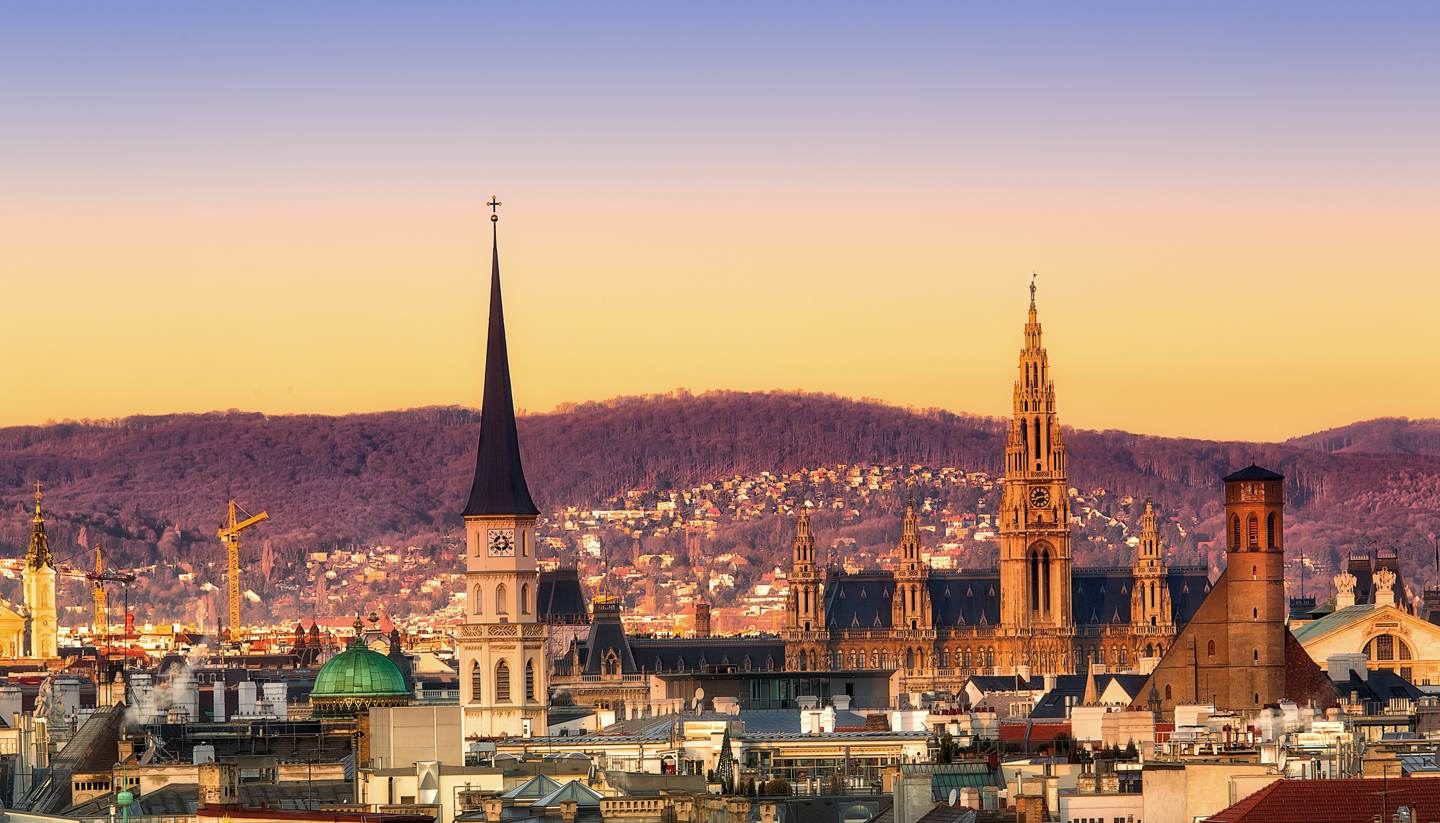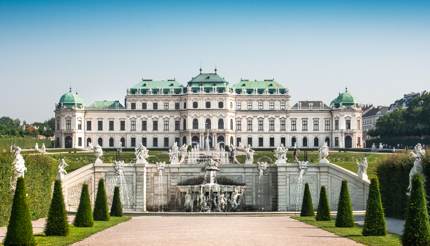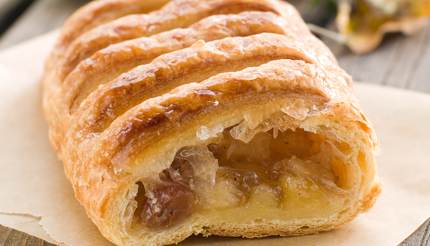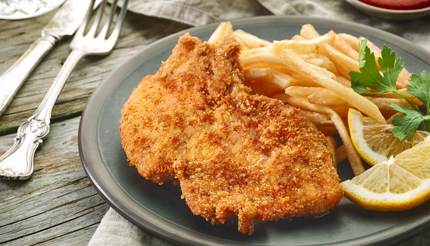Discover the blend of Baroque grandeur and space-age museums in Vienna, and see why it’s constantly voted one of the world’s most liveable cities
Timeless and elegant, Vienna oozes an imperial charm unmatched by other European cities. This is the city where you’ll find opulent coffee houses serving up fancy Sachertorte (chocolate cake) on fine china and magnificent palaces where gilded chandeliers illuminate paintings by the Old Masters. This is also the City of Music – strains of Mozart and Beethoven still float down cobbled lanes while classical concerts continue to draw crowds.
When to go
Spring (March-May) is the best time to visit if you like classical music as the Vienna Spring Festival, an annual classical music festival, is held at the historic Konzerthaus and other venues across town.
Summer (June-August) is the season tourists love best. The warm temperatures bring the grounds of the palaces into radiant bloom and locals gather in open-air cafés to watch the world go by.
Autumn (September-November) is when film fanatics flock here for the annual Vienna Film Festival. Vienna is breathtakingly beautiful around this time as the trees change colours.
Winter (December-February) is cold, but it’s also the best time to savour the elegance of Vienna amidst soft falling snow. This is also Vienna’s Ball Season, so pack your tux or gown, and waltz in any of the 450 balls staged around the city.
Getting around
Vienna Transport is an extensive network, which includes U-Bahn (subway trains), buses, trams, and S-Bahn (suburban trains). For visitors, getting the Vienna City Card is a smart choice as it offers 24, 48, or 72 hours of travel on public transport, hop-on hop-off bus tours, and discounts to restaurants and attractions.
You can also explore Vienna on bike. To find out more on bike hire and other transport options, visit the Getting around Vienna page.
Must-see attractions
Schloss Schönbrunn
This ostentatiously lavish Habsburg summer estate boasts 1,441 rooms and is a treasure trove of lavish furniture and trompe l’oeil paintwork. You can choose between two types of tour to see up to 40 of these rooms, with the aid of either an audio or tour guide.
Website: www.schoenbrunn.at/en
The Hofburg
The royal residence from 1273 to 1918, the Hofburg is a massive construction of architectural diversity, owing to the many emperors who expanded the estate during their time there. Today, you can visit multiple museums housed within the building, including the Sisi Museum, the Imperial Apartments, and the Silver Collection.
Website: www.hofburg-wien.at/en
Schloss Belvedere
In case you didn’t get enough of museums and palaces, you can visit the Belvedere, one of the world’s finest baroque palaces, which displays an extensive art collection as well as sculptured gardens.
Website: www.belvedere.at/en
Spanish Riding School
For true Viennese entertainment, the famed Spanish Riding School’s equestrian show is a jaw-dropping experience. Book far in advance to see the graceful Lipizzaner stallions perform a ballet set to classical music, or drop in for a guided tour of the performance hall and stables.
Website: www.srs.at/en
Prater
This large public park in Vienna is home to a giant Ferris wheel, nostalgic merry-go-around and roller coaster offering heart-pounding rides. Its widespread meadows have been a favourite Viennese retreat for more than 250 years.
For more ideas on must-see attractions, visit our Things to see in Vienna page.
Quirky & Offbeat
Sigmund Freud Museum
Visit the house from which Freud developed his most influential psychological theories and treated patients for a host of mental illnesses he diagnosed. The museum also includes several exhibitions of contemporary art.
Website: www.freud-museum.at/en
Funeral Museum
The world’s first museum about funerals and cemetery culture is located in Vienna’s world-famous Central Cemetery. Through interactive multimedia content, you will learn about the funeral industry, cemetery history, and the “Viennese cult of the dead.”
Website: www.bestattungsmuseum.at
St Virgil’s Chapel
This incredibly well preserved subterranean chapel was discovered when contractors were digging for the underground metro construction in 1973.
Website: www.wienmuseum.at
For other off-beat attractions, including a visit to the United Nations complex, visit our Things to do in Vienna page
Travel tips
Must-try specialties
- Apfelstrudel – apple strudel
- Almdudler — the unofficial national drink of Austria
- Buchteln — dinner rolls
- Sachertorte – chocolate cake
- Gugelhupf — a sweet cake
- Schnitzel
- Riesen Hot Dog
- Wiener Zuckerl — a hard candy
Tipping: Most restaurants include tax and a service charge in the bill, but it’s customary to round up the total when paying. For instance, if your bill is €33.50, you may pay €35.
Hotels in Vienna
You can really live like a king in Vienna by checking in to a former Habsburg palace built in 1869 – the aptly named Hotel Imperial retains most of its original features, including ceiling frescoes and Old Master paintings. There are many 3-star hotels too. For more information, see our Hotels in Vienna guide.
Nightlife in Vienna
Most visitors look for a cultured evening of classical music in Vienna, but you can also visit quiet pubs or late-night clubs. The old Jewish Quarter (First District) has the most popular cluster of bars, in an area known as the Bermuda Dreieck (Bermuda Triangle). Check out our Nightlife in Vienna guide for recommendations.
Visa requirements to Vienna, Austria
Americans, British and Canadians don’t need a visa to visit Vienna. If you are from a country that requires you to have a visa to the Schengen area, you need to apply before your travel. For more information, check out the Austria visa and passport requirements page.










